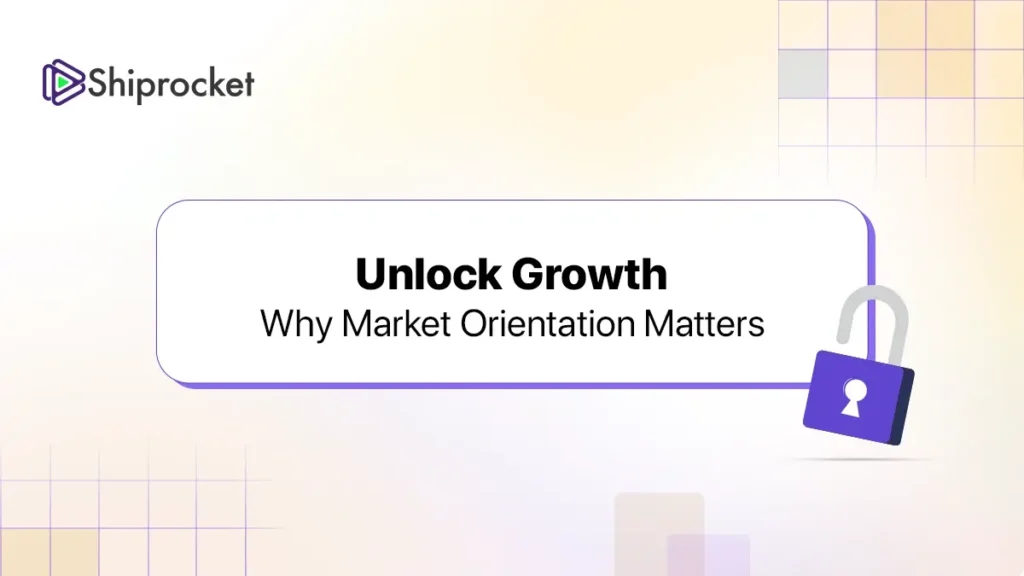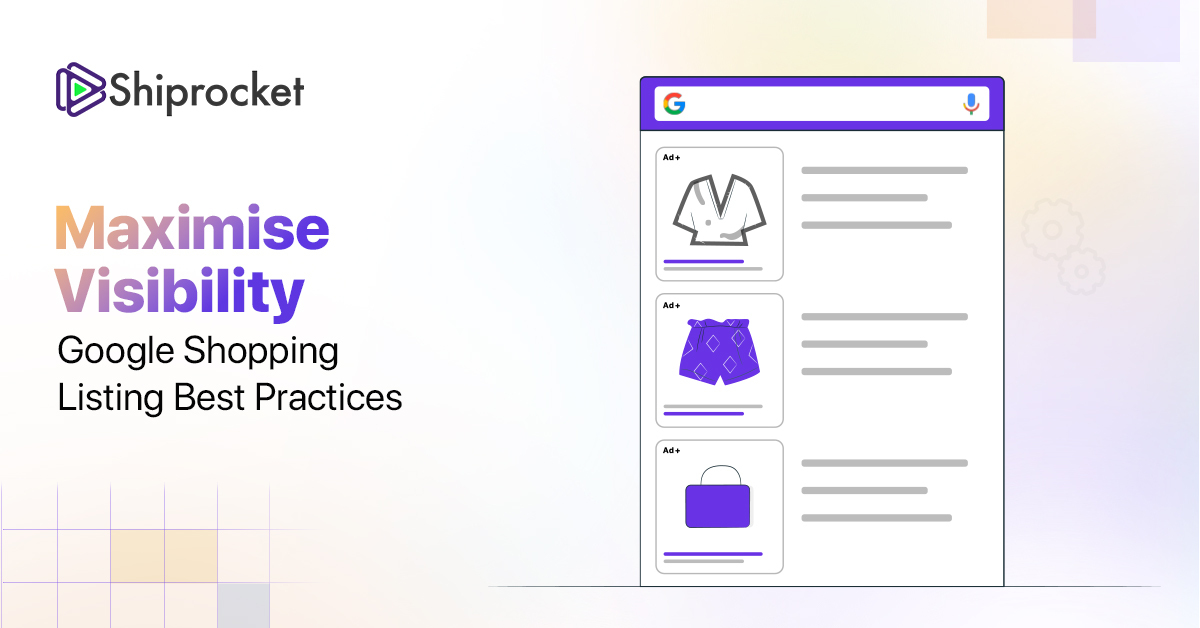Market Orientation: Key Benefits & Best Practices
Market orientation is a strategy that places the customer at the core of business activities. Understanding customer needs and delivering products and services aligned with your buyers’ needs can help you focus towards driving sustainable growth, maintaining brand loyalty, and avoiding competition. How does market orientation work, what are its advantages, and what do real-world examples look like?
This article guides you through the simple steps of how market orientation leads to business growth.

How Does Market Orientation Influence Business Operations?
Market orientation fundamentally changes the way business is done. It helps to focus on customer behaviour and market trends. It is an ongoing process of obtaining information regarding customers, competitors, and industry developments. With the market orientation marketing strategies in practice, the businesses offer their products or services according to what their customers want, resulting in personalisation.
For example, the market-oriented approach applies to developing cross-functional teams that work together to provide value to customers. Everything from product development to after-sales service is tuned to meet customers’ needs. This practice enhances customer satisfaction by eliminating resource waste on unwanted offerings and streamlining operations. It also instils a sense of trust that companies that practise this tend to do it for the long haul.
Finally, market orientation helps to create a culture of continuous improvement. This kind of encouraging mindset keeps organisations ahead of the game and the employees focused on the customers. This proactive thinking is particularly important in fast-moving markets, where consumer tastes and competitive landscapes can change effectively overnight.
Top Advantages of Adopting Market Orientation

Adopting a market-oriented approach brings many advantages, which in turn can result in growth:
- Driving Innovation: Market orientation helps in innovation by encouraging regular engagement with customers. This helps businesses identify existing products and market gaps, enabling them to create better solutions that resonate with their target audience. This proactive approach keeps companies up-to-date and competitive.
- Building Customer Loyalty: Another major benefit is strengthening consumer loyalty. When a brand is perceived by its buyers as understanding and respecting their claims, it becomes easier to retain them as long-term consumers. This often results in repeat purchases and higher profitability, as buyers regularly make positive word-of-mouth referrals and also return themselves after being treated well.
- Decision-making Boost: Market orientation also promotes more effective decision-making, from information-based insights. This enables businesses to make informed decisions about pricing, marketing tactics, introducing new or improving existing product features, minimising potential losses, and maximising the return on investment.
- Fine-tune Brand Positioning: With a market-oriented approach, businesses are in a stronger marketing position. When they continually deliver value to customers by serving them well, companies create for themselves the image of an honest and above-board, reputable provider – which then helps attract new clients. Additionally, by monitoring shifts in consumer trends, businesses can anticipate future demands through proactive research, ensuring they stay ahead of the curve. This approach guarantees a competitive advantage.
Understanding the Limits of Market Orientation
As you’ve seen how market orientation can benefit you; unfortunately, it also has some limitations like the following ones:
Over-Reliance on Customer Feedback
A potential risk of adopting this market-oriented approach is overreliance on customer input for business decisions. Knowing your customers isn’t enough; you must balance that desire with your vision and your skills. Too much focus on customer demands can sometimes inhibit creativity and result in behaviour that leads to incremental improvements instead of disruptive innovations.
An Expensive Affair
Staying market-oriented often requires a lot of time and money. Data collection and processing, employee education, and execution of customer-facing strategies can be time—and resource-consuming activities for businesses, especially smaller ones. This market orientation may sometimes be at odds with achieving maximum short-term profitability. Instead, companies will have to begin investing in long-term customer relationships, which won’t necessarily immediately translate to actual profit.
Requirement for Hyper Team Collaboration
Market orientation requires extensive coordination throughout multiple departments within an organisation. Communication and key marketing terms can vary by demographic, geography, or culture, making it challenging for companies to accurately interpret customer data.
However, there is a solution to overcome these challenges: find a balance between customer insights and strategic foresight. Leverage AI predictive analytics technology to enhance market-focused strategies at scale with greater accuracy and efficiency.
Market Orientation vs. Other Strategies
Market orientation is often compared to other business strategies, including product and sales orientation. Although all of these strategies focus on driving growth, they differ greatly in focus and execution.
Product orientation is centered on the product’s functionality, quality, and features, operating under the belief that a great product will sell itself. Such an approach could work well in industries where innovation and craftsmanship matter. This can provide companies with a potential advantage early on at the launching of new products, but take those products too far, and it can miss customers’ evolving needs.
Sales orientation, on the other hand, prioritises pushing customers to make purchases, often through aggressive tactics. While it may bring short-term sales, this approach can overlook customer satisfaction and long-term loyalty.
A hybrid model combining elements of product and market orientation can be effective. By leveraging product orientation to drive innovation and market orientation to understand consumer expectations, businesses can balance product development with market demand.
Case Studies: How Companies Use Market Orientation
Several worldwide brands are living examples of successful market orientation. Here are some of them:
- Apple Inc.
One of the most cited examples of successful market orientation is Apple and its deep commitment to understanding customer preferences and implementing them in the design of its products. The intuitive user interface on the iPhone and the seamless connectivity between all its devices have made its market-oriented approach a complete success and Apple a market leader.
- Amazon
A good case for a a market-oriented approach is Amazon, which applies marketing to develop client experience. Amazon, for instance, has implemented data analytics and customer feedback mechanisms. The eCommerce giant now excels at personalised recommendations, expedited shipping options, and a customer support experience that sets the standard. Its greatest focus was on innovation with the customer in mind, which has allowed it to become one of the most valuable companies in the world.
- Procter & Gamble (P&G)
Another exemplary firm that illustrates the essence of market orientation is Procter & Gamble (P&G). This company conducts extensive consumer research to create products for particular needs. For example, its Pampers brand was developed in response to market insights, discovering what matters most to parents (including comfort and absorbency) and becoming the dominant leader in baby care.
- Netflix
Netflix uses data about its viewers’ the viewing habits and preferences to create highly personalised content recommendations. Customers not only became addicted to the platform but also benefited from original content that fed, aligned, and guided their appetites, taking Netflix towards world domination in viewership and subscription sales.
Conclusion
This focus on customer needs is the crux of market orientation, the main strategy behind sustainable growth and brand loyalty. When products and services align with consumer expectations, there are no price wars, and businesses can focus on providing value. Market orientation encourages innovation, improved decision-making, and brand positioning, as shown by companies such as Apple, Amazon, Procter & Gamble, and Netflix.
To make leaps in a competitive environment, you need to have a market-oriented mindset that helps you stay abreast of evolving customer demands, keeping you on a course that is highly responsive in nature and ensures future success.
Take your business to the next level with Shiprocket. Optimize your strategy with powerful tools to manage customer engagement and streamline operations. Stay ahead of the competition and build lasting relationships with your audience.





